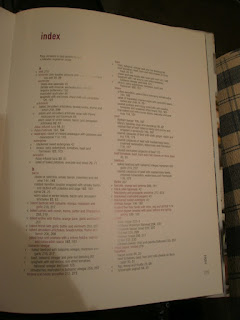Yes, it's been a while. Much to tell and less time to do it in. But for now, a review.
 From the original post by Booksellers NZ, book review: Secrets
and Treasures: Our Stories Told Through the Objects at Archives New Zealand
From the original post by Booksellers NZ, book review: Secrets
and Treasures: Our Stories Told Through the Objects at Archives New Zealand
This book is in bookstores now.
Just so it’s out there, I love history. Always have, always
will. The teacher always made the difference for me when studying any subject
and this book is no different. Secrets
& Treasures is written like Ray Waru is standing with you, talking and
teaching you about every detail he picked up in the short time he had at
Archives New Zealand, while holding up amazing photos to accompany his words.
The book itself is simply beautiful, to compliment the
outstanding work inside. Waru has done a huge amount of research, and has said
in interviews the idea started with the tapes from the Erebus disaster (a topic
which takes up eight pages of this almost 400 page book). The book is split in
to five parts plus an introduction, and covers a huge range of topics, from the
little-known Declaration of Independence of 1835, to the creation of New
Zealand’s own currency in 1935, to the complaints the film censor received
about The Life of Brian.
Part 4 ‘The Black Museum’ is the section that sucked me in
the most. As the name suggests, it’s full of the secrets your grandma probably
remembers but never wanted to tell you. These include the Crewe Murders, the
Parker-Hulme murder and Amy Bock the ‘male bride’. My favourite part from the
section is the story of The Bones in the Box. The first page is dominated by a
photo of a seemingly harmless box, which, of course, contains bones. More
correctly, the cranium of Francis Roy Wilkins. The story of Wilkins is hugely
interesting and shrouded in mystery – his murder in 1947 is still unsolved.
Creepy.
Waru’s writing is really quite flawless; it flows easily,
making what could have been a very dry and uninteresting book into something
that makes you keep wanting more. Although I wouldn’t put it in to the ‘coffee
table book’ genre, it is something you can pick up and just flick through. Pick
a page and start reading, or as I did, start at the beginning and read right
the way through.
Waru doesn’t overbear you as the reader with information;
he’s picked up some of the key moments from New Zealand’s history, and
carefully written about them in such a way you just want to keep turning the
pages. He’s not long winded – he knows what he wants to say, and does so in a
timely fashion.
To go along with Waru’s text is some stunning photography.
All of the new shots were taken by David Sanderson, an employee of Archives New
Zealand, and an amazing photographer in his everyday life. There is a fantastic
YouTube clip of Sanderson explaining how the cover image was shot. It’s
definitely worth a watch (click on the link, do it), I don’t have a huge interest in photography, but it
totally blew my mind learning the ways you can use a camera if you know how.
Although the text stands really well on its own, there’s no
way this book would work without the images. Sanderson’s ability to capture
something beautiful in the axle that supposedly weighed down the body of Harvey
Crewe, or a reel canister filled of scenes literally cut from film reels, is
really remarkable.
The depth and manner of Secrets & Treasures make it a
definite must for every home around New Zealand. Waru’s words with Sanderson’s
photos make it easy to read from cover to cover, or just to pick up and flick
through when it’s sitting on your table. I can think of at least five people I
would definitely buy this for at Christmas, it should be on everyone’s list. I
haven’t even begun to cover what the book contains in this review. Trust me,
it’s worth a look.
New Zealand history may not span over a huge number of
years, but the depth of history we have discovered and have documented is
amazing for a small country. And this book shows off a really small part of it
incredibly well. Waru said on Radio New Zealand he believes there’s easily a
series of books to be written about the items hidden away in the depths of
Archives New Zealand. I believe it’s something that should be invested in –
people often perceive history books to be dry and boring, but Secrets &
Treasures throws that theory out of the water. Plus, every day history is made,
so there’s always going to be material for the books. There’s no end to it.
Secrets and Treasures: Our Stories Told Through the Objects
at Archives New Zealand
by Ray Waru
Published by Random House
ISBN 9781869796891
Review book supplied by Random House NZ via Booksellers NZ.










































